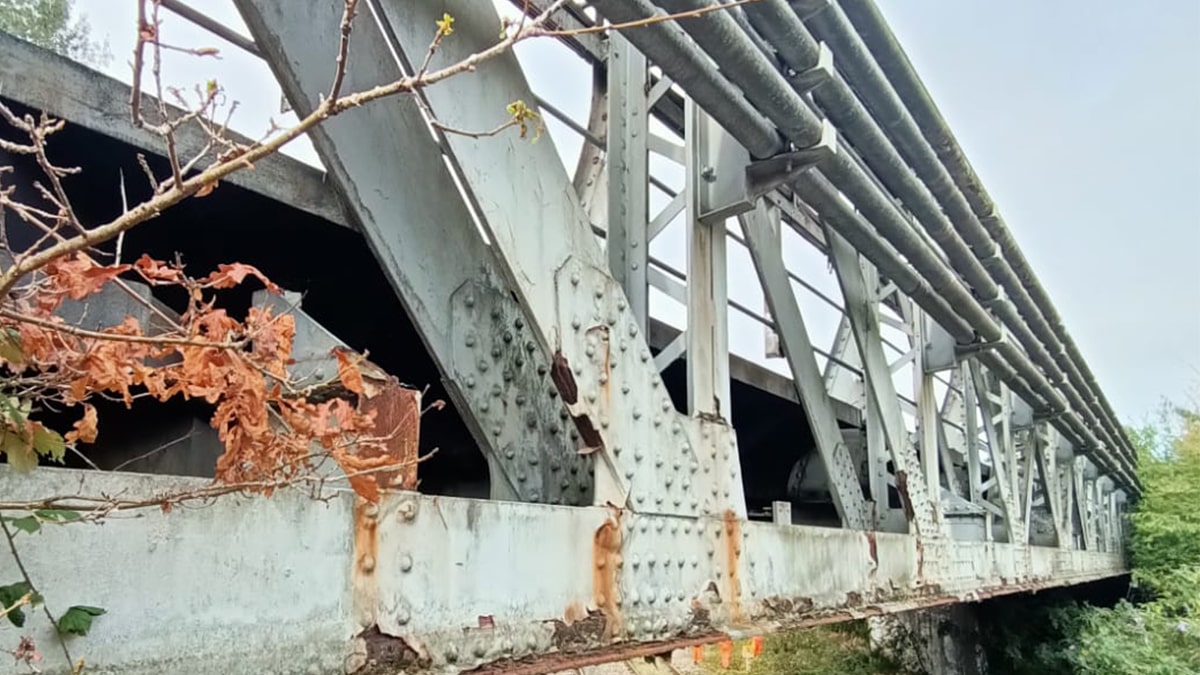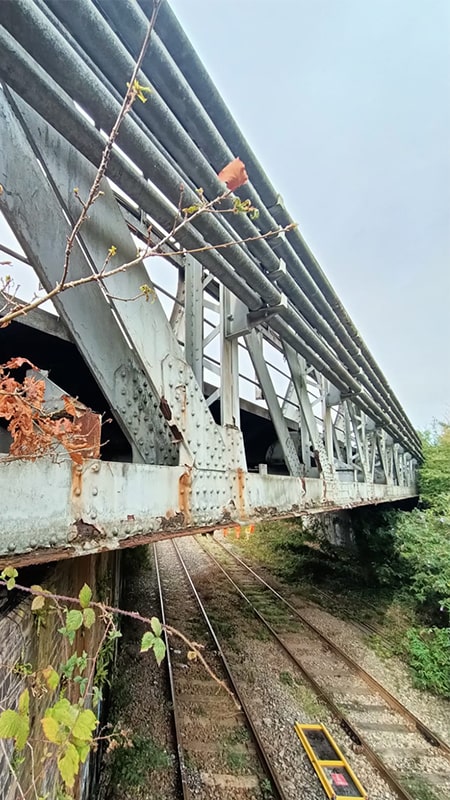

Piccadilly Line Overbridge is located in the London Borough of Brent, Greater London. The structure carries 2No. London Underground Limited (LUL) Piccadilly Line tracks over 2No. LUL Central Line tracks and 2No. Network Rail (NR) ANL line tracks.
A ground movement assessment (GMA) carried out by a previous consultant determined that mitigation works were required, and Robert Bird Group (RBG) was brought in initially to carry out an enhanced ground movement assessment on this structure to confirm these findings. RBG was in agreement that these works were required and were appointed to carry out mitigation works, which consist of replacement of the existing bearings on the western abutment.
Key technical challenges
RBG have undertaken an enhanced Ground Movement Assessment (GMA) based on Inspection for Assessment (IFA) reports (by others) and a validation of the predicted ground settlements due to tunnelling below the bridge. RBG also undertook an additional site visit to the structure to verify support articulation assumptions. An analytical finite element model of the structure was created to assess the bridge behaviour under the induced tunnelling settlements below the bridge. Results of this analysis were used to conclude that mitigation measures were required due to the effect of tunnelling related movements on the south span, in its current condition.
RBG subsequently completed the design and production of design drawings associated with mitigation works, as well as validation of TfL’s latest principal inspection report conclusions. We took the design through IDR with HS2 and other stakeholders, L3 certificate and construction on site.
Added Value
Careful consideration of scheme constructability and the project and site constraints to achieve a viable minimum disruption and low cost solution for mitigation works.
Use of RBGs specialist inspection engineering teams to access and work within the operational railway at height to identify deviations between archive drawing information and the current conditions on site.
Use of advanced digital 360 site capture to provide a better understanding of the site surroundings to the client. This also provided digital reference models which were used for discussion within Early Contractor Involvement (ECI) meetings, aiding the design process and site familiarisation for the construction contractor.
Inter-stakeholder liaison and expert knowledge of stakeholder requirements and processes (Network Rail, Transport for London)
Sustainable Methodologies and Outcomes
The nature of the project and guiding principle behind the scope was directly aligned with the principles and hierarchy of carbon reduction, with the aim of ‘do nothing’ and then to minimise works/extend the use of existing structures.
During the optioneering stage of the project RBG identified that extensive restrengthening by overplating of the south span main girders would be economically and materially least sustainable and therefore non-preferable. Through structural analysis of the south span, RBG were able to demonstrate that reinstatement of longitudinal movement, would allow the structure to accommodate thermal and tunnelling related effects.
RBG therefore proposed to remove a small portion of cast iron, from the plinth obstructing longitudinal movement of the south span. The proposed solution reduced both financial impact, material quantities and impact to the environment.
Project Metrics
Client:
HS2
RBG Role:
Design
Completion:
2024
Sector:
Rail
RBG Service:
Structural , Civil , Geotechnical